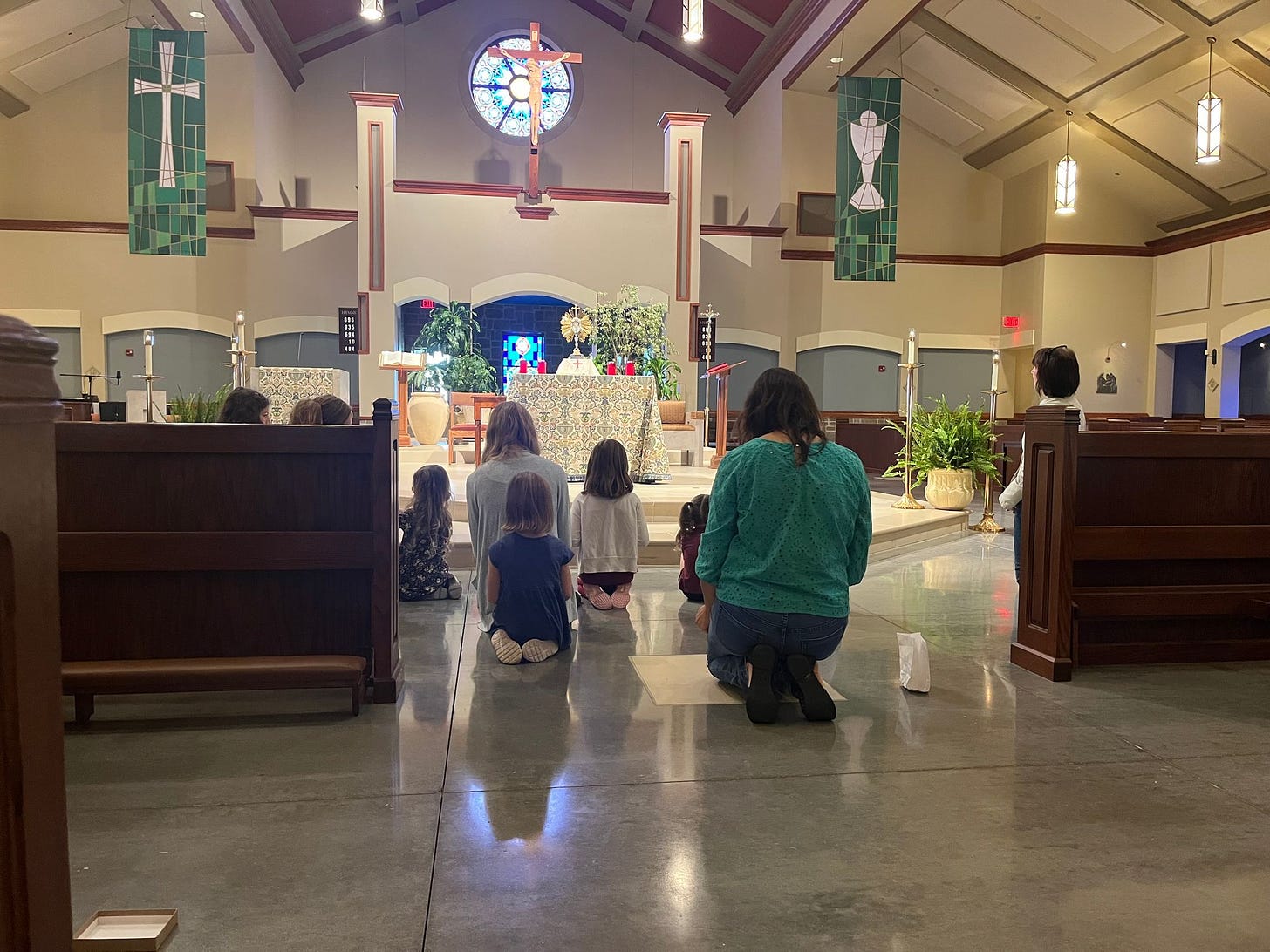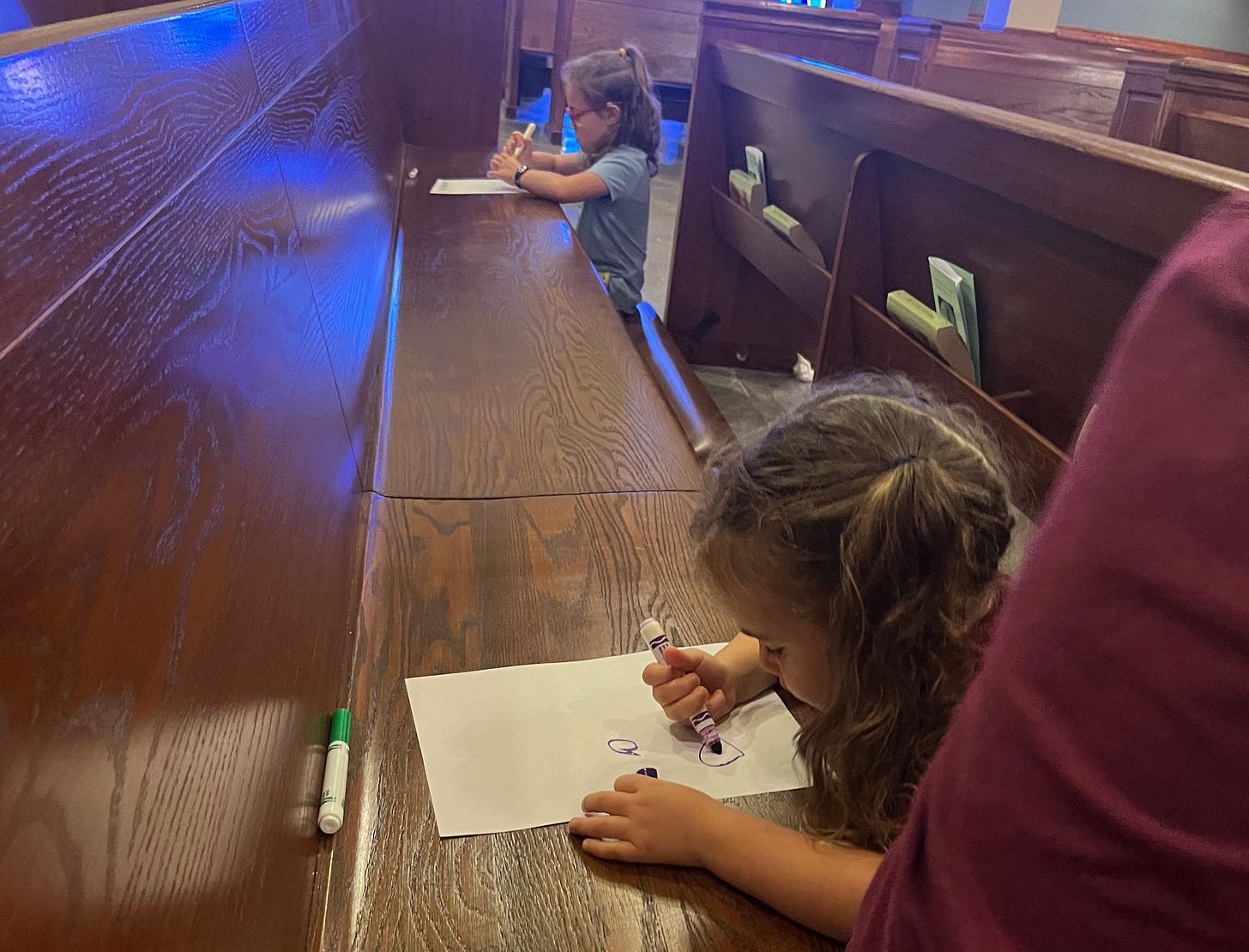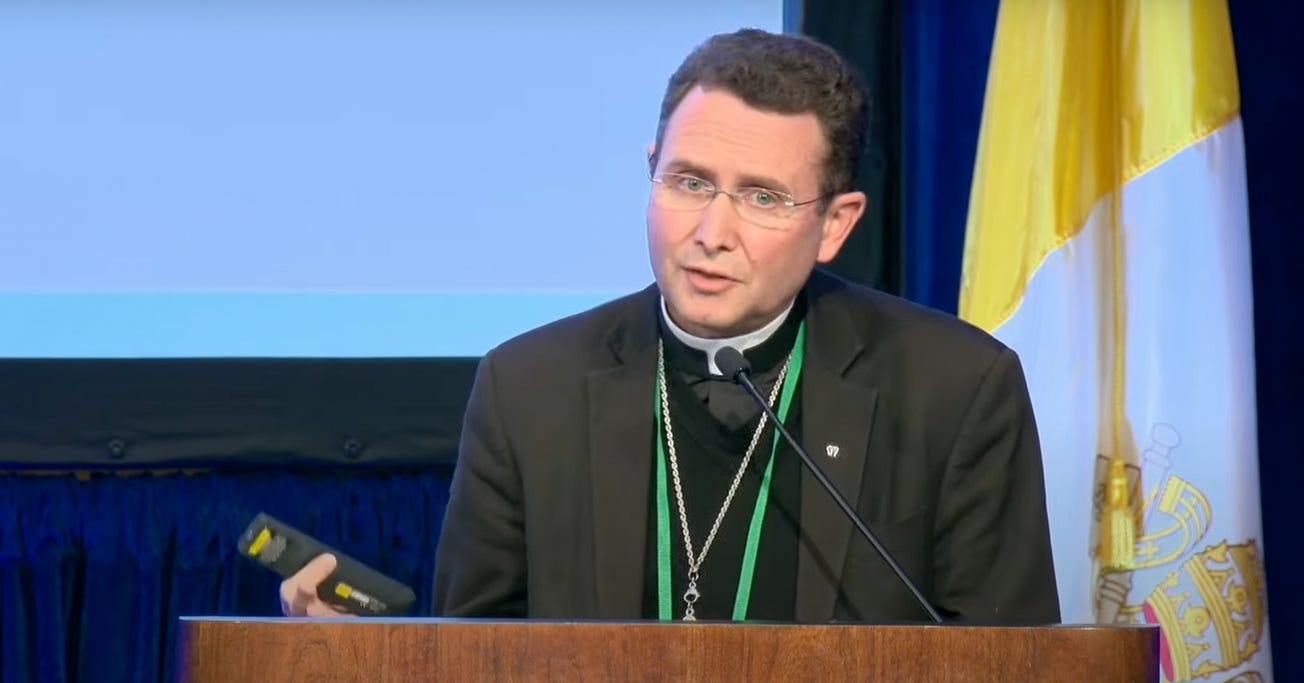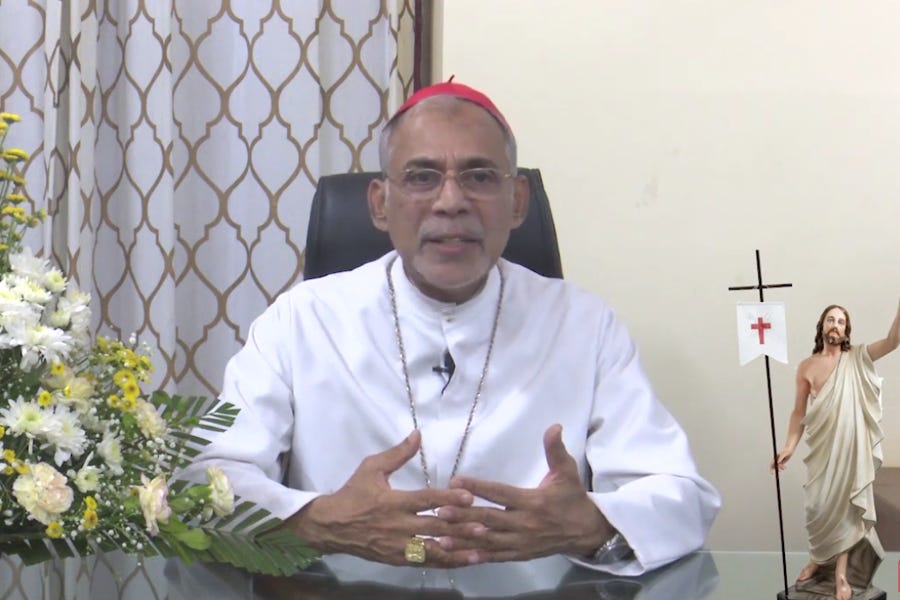It’s no secret that bringing young children to church can be challenging.
Pope Francis once said that “It is a beautiful homily when a child cries in church.” But for many parents, the experience of watching over noisy, inattentive children at Mass is anything but prayerful.
In fact, it can be downright overwhelming and discouraging, particularly when parents fear they are disrupting those around them - and feel judged for their kids’ behavior.
The expectation of silence and stillness is even greater in Eucharistic adoration, and parents may feel intimidated and deterred from making this practice part of their regular prayer life while their children are young.
St. Mary’s Parish in Blacksburg, Virginia is aiming to help young families overcome those obstacles by making Eucharistic adoration accessible for even its youngest parishioners.
The parish hosts a monthly half-hour of adoration specifically for families of young children, after which the families spend time together on a local playground.
With Gospel readings, reflections, songs and crayons, the event offers a space where noise is okay, but prayer is still central.
Chris Hitzelberger, director of Catholic Campus Ministry at Virginia Tech, knows well the struggles of bringing children to church. He and his wife Joanna have five children, ranging in age from 17 to six.
“The challenge of having young kids is, ‘I’m at church, and I want my kids to be in church, but they’re acting up, or they’re small and they’re crying, and I feel like everyone’s looking at me,’” Hitzelberger told The Pillar.
“And if that’s hard at Sunday Mass,” Hitzelberger continued, “it’s impossible at adoration.”
“It’s like, ‘How do I find a place where it’s okay that my kids are noisy, but we’re still kind of here in church?’”
When they first began children’s adoration in the fall of 2019, it was as part of the local Catholic moms’ group to which Joanna belonged.
Because of his position with Virginia Tech’s campus ministry, Hitzelberger was already permitted and trained to expose and repose the Blessed Sacrament in the absence of a priest or deacon, which made him the de facto facilitator.
Like so many things, children’s adoration was temporarily derailed by Covid. But the hiatus offered the Hitzelbergers and the other families involved a chance to reevaluate the idea.
While they had originally held adoration in Virginia Tech’s campus ministry facilities, they decided to move it to their parish, and they switched from a weekday time slot to Saturday mornings, to better accommodate working parents and school-aged children.
‘To grow closer to Jesus’
An average Saturday morning usually goes something like this: Families—three on a small week, eight on a large one, Hitzelberger said—gather for half an hour of Eucharistic adoration.
Afterward, they all head to a local playground, where the adults chat while their kids play together. (And, like the soccer games likely happening elsewhere at the same time, someone is responsible for bringing snacks.)
It’s a simple enough idea, but designating the time and space for families does not necessarily spell success. The balance of maintaining a reverent environment while allowing for ordinary childhood wiggliness can be difficult.
“Most kids can be quiet for a couple of minutes, right?” Hitzelberger said. “They have a hard time when they kind of get bored, they get fidgety.”
Their strategy, he explained, is to keep the kids engaged by accounting for every minute. There’s time for silent prayer, but never for longer than two or three minutes at a time— between which they explain different elements of the devotion, read a Scripture passage (often the following Sunday’s Gospel) and offer a reflection, sing songs, pray a decade of the rosary or draw pictures for Jesus.
He said he likes to start with a short introduction, aimed at helping the children understand what is about to happen.
“I’ll give a little two minute [intro] like, ‘We’re getting ready to get started, and you’ll know that I’m getting ready to start because you’ll hear the bells ring. That means our King is coming! And what do you do when you see a king? Oh, you kneel. So when you hear the bells, we’re all going to kneel because the King is coming.’”
As they move from one type of prayer to another, they also try to get the kids physically engaged—for example, inviting the children to kneel at the edge of the altar while they pray a decade of the rosary.
Hitzelberger said he thinks this allows young participants to move around, while also recognizing certain moments of prayer as special and different.
“Probably halfway through some of the kids start to get a little bit squirrely, but the big thing is you keep them moving,” he said.
The parents themselves also help to create a no-judgment atmosphere.
“The woman who [read from Scripture] last time for us—her two-year-old did not want to sit still,” said Hitzelberger. “So she’s holding him and he’s climbing all over her. … But what was cool was she was still willing to get up there and do that. And then I think that kind of encourages the moms [who] are like, ‘Wow, okay, she’s doing this, and she’s distracted and she still seems to be okay like that. It’s okay for me to have that same challenge.’”
Michelle Erickson, a mom who attends the Saturday morning adoration sessions regularly with her three children – ages seven, five and three – said she gets a little bit of personal prayer during these periods of adoration.
“Now that my kids are getting older,” she told The Pillar, “I have found I have a few minutes throughout the half hour for some quiet time.”
And what does she think it’s like for her kids?
“Honestly, I think they just like going because it’s somewhere to go, but I’m hopeful it’s a good seed we are planting,” she said. “I can see the fruit from my oldest the most, like things she’s learned about how to pray.” She added that they all enjoy the social time after.
Keeping expectations realistic is key for Erickson. Parents will likely not get a full half-hour of prayer, and kids may not be as well-behaved as their parents would hope, but that’s ok.
“The vision is for the kids (and parents) to grow closer to Jesus,” Erickson said.
Lessons learned
Hitzelberger and his wife learned a number of lessons as they worked to implement the children’s holy hour at their parish.
Chief among these lessons is that scheduling is never easy – and there is no shortage of conflicts: track practice, parish choir rehearsal, nap time.
Ultimately, Hitzelberger said they found that it was best to simply decide on a time and stick with it.
Sticking with it also meant deciding ahead of time how long they would try it out, he added.
He and Joanna decided to commit to children’s adoration for two years before they reevaluated its effectiveness in the community.
After two years, the ministry was still so small that they thought about giving it up. It just didn’t seem to be growing like they had hoped it would.
But instead of giving up at that point, they decided to pray “with expectant faith” that if the Lord wanted them to continue, they’d see three new families over the following three months, Hitzelberger said.
If after three months they had not seen this modest growth, they decided, they’d have their answer: “There was a time for this, and it was good while it was there, but this is not where we need to spend our energy.”
The very next month, three new families showed up.
So the ministry continues today.
Attendance is still modest. And attendees tend to be parishioners who are already heavily involved in parish life. But Hitzelberger has accepted that the ministry does not need to be huge to bear fruit in the lives of the parish families.
Children’s adoration is mentioned on the parish website, as well as in the bulletin.
“Occasionally, we get someone who read [about] it in the bulletin, but [for] most [newcomers], it is word of mouth,” Hitzelberger said.
Bearing fruit
Even if St. Mary’s program never grows larger than a few families per week, Hitzelberger believes the ministry can still bear fruit in the lives of those who attend. Surveys show that fewer than half of U.S. Catholics believe in the Real Presence of Jesus in the Eucharist, and the practice of Eucharistic adoration in childhood is correlated with continuing regular Mass attendance later in life.
Hitzelberger believes the children’s adoration program could be replicated at other parishes, as long as there are a few families willing to commit to participating and permission from the pastor.
He said the organizer should be prepared with several different forms of prayer to include between small stretches of silence – a decade of the rosary, Scripture readings and reflections, songs, and coloring assignments, for example.
Hitzelberger added that at St. Mary’s, they always incorporate at least one traditional element of adoration, like singing the Tantum Ergo or reciting the Divine Praises at the end.
Gathering at a playground after adoration is one way to let the kids stretch their legs while parents get to chat. But the social aspect could take many other forms: donuts in the parish hall, for example, or lunch at a local cafe.
The most important thing, Hitzelberger stressed, is that “these little kids got to see Jesus!”






